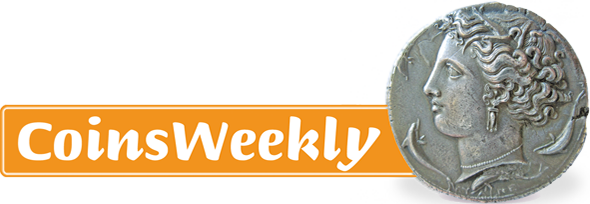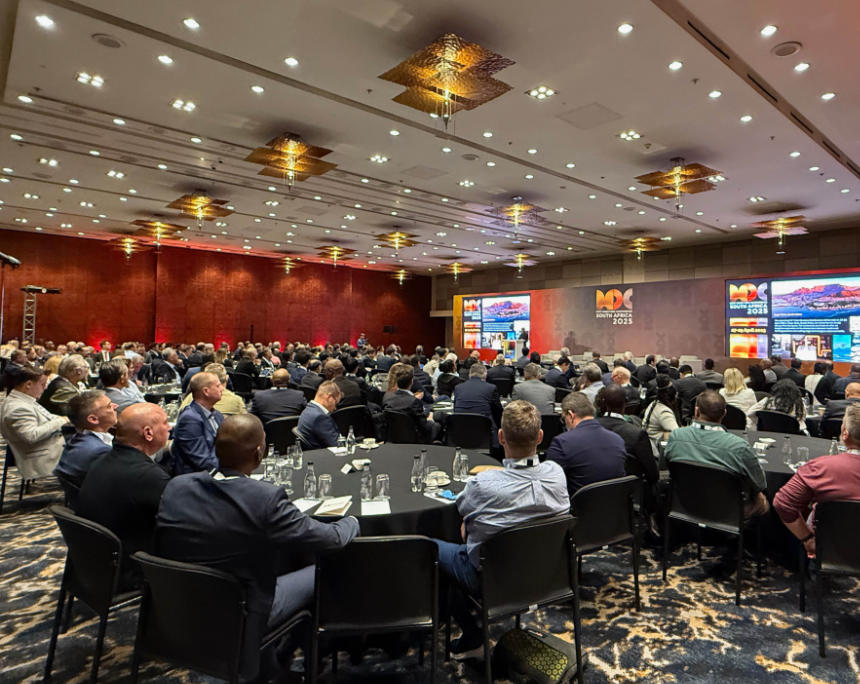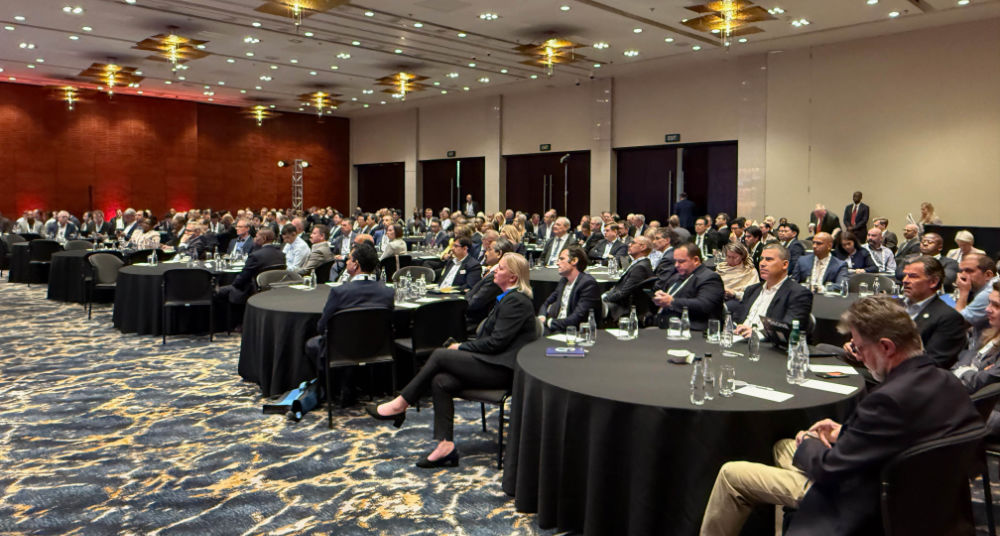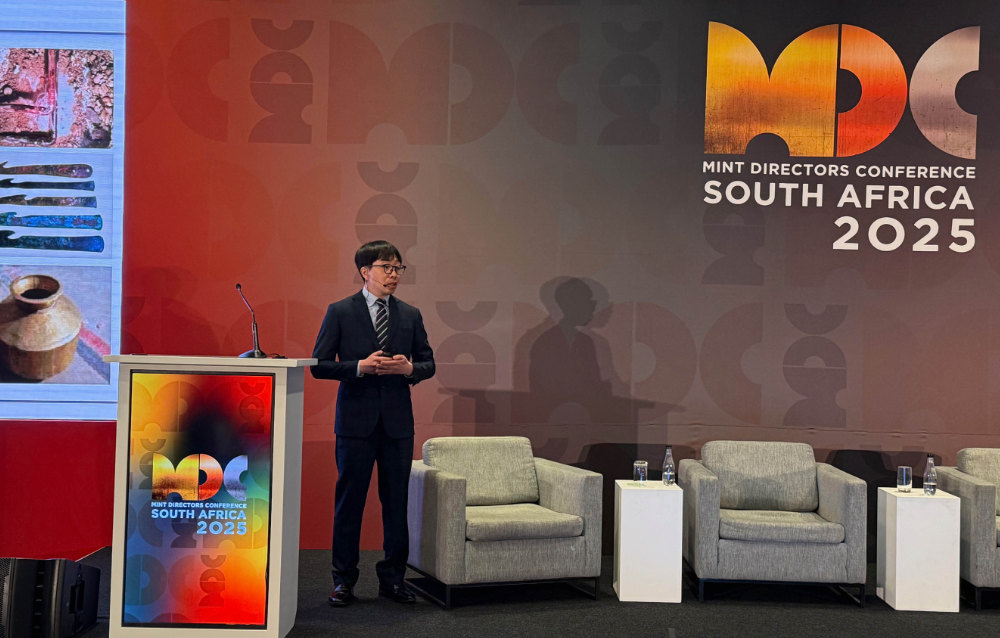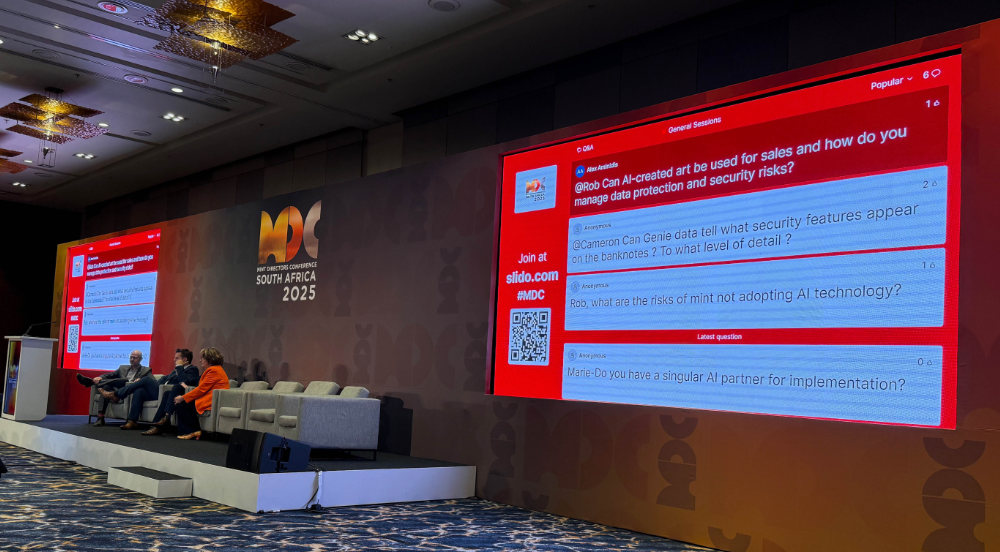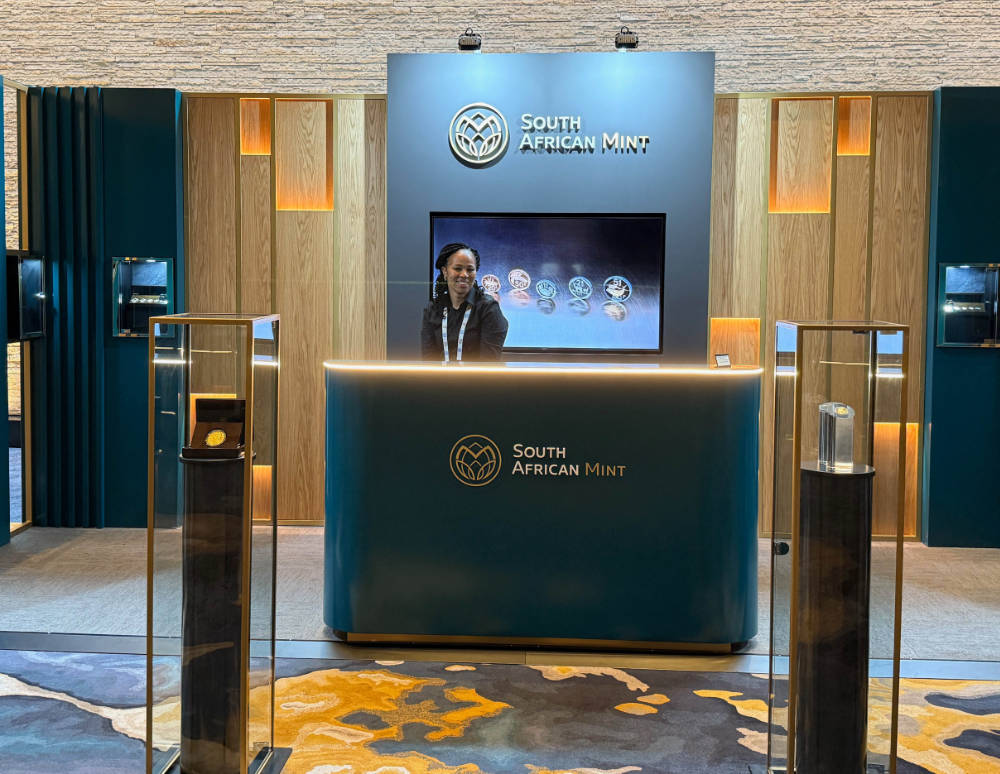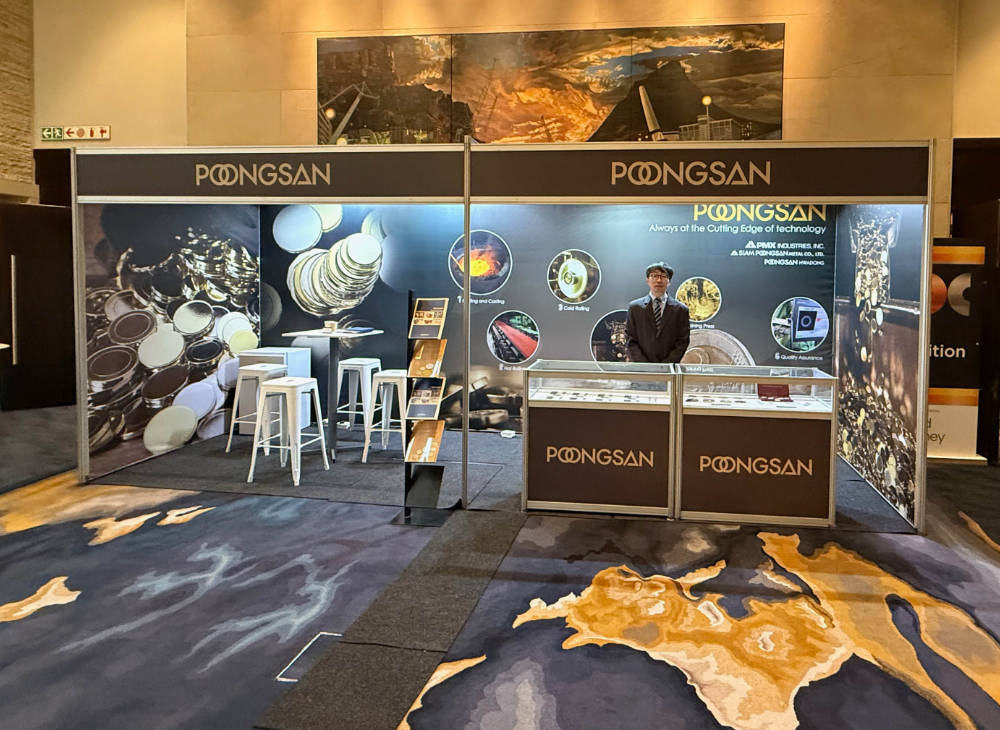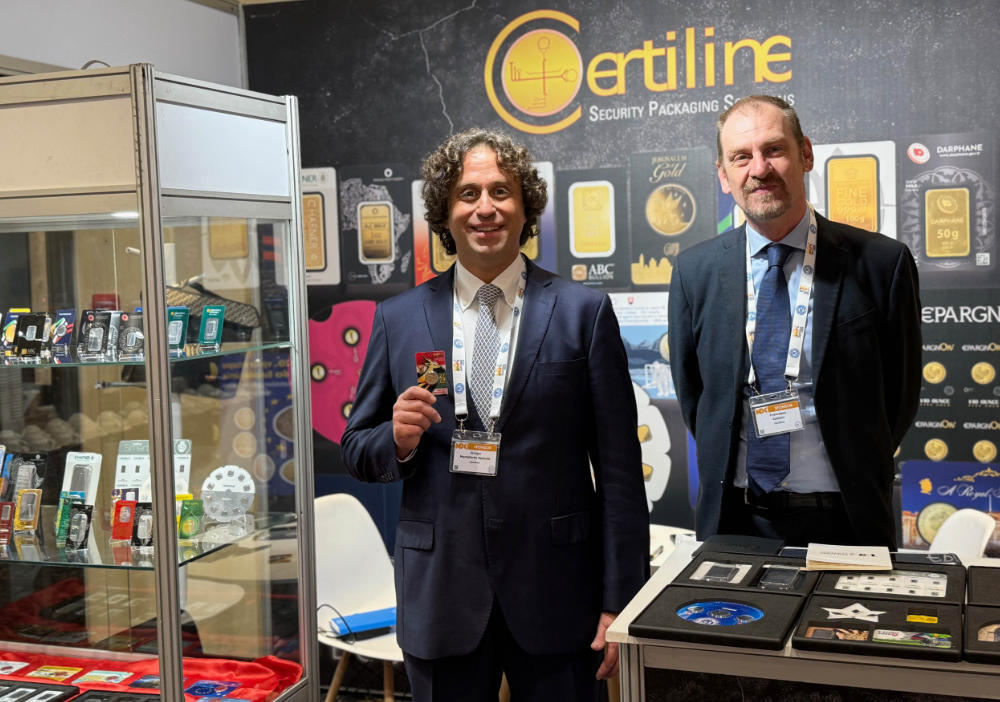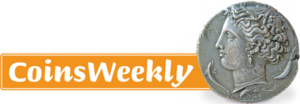Between Tradition and the Demands of a New Economic World
When I finally landed in Cape Town after almost a week of numismatic, historical, and zoological excursions to attend the Mint Directors Conference, I had almost forgotten that this was the only reason I had traveled to South Africa. But as soon as the first familiar faces appeared, I was back, right in the middle of the world of coins.
The conference began on Sunday evening, April 27, 2025, with a grand reception in Cape Town’s nightlife district and concluded after two jam-packed days of presentations, workshops, roundtable discussions, and informal discussions with an impressive gala dinner on Tuesday, April 29, 2025. 230 delegates from 31 nations and 93 organizations traveled to this major event. This was not quite as many as at previous MDCs. The extremely high airfares to South Africa were noticeable, causing many company bosses to wonder whether they should really send as many people to South Africa as usual.
Content
A Divers Program
Traditionally, the MDC is the biennial occasion to present the results developed by the various subcommittees. So, there are many updates to technical manuals and best practices. But these aren’t the only topics where the technical committee scores points. While in the past the focus was on speed, efficiency, and cost reduction, the conversation has shifted increasingly to sustainability in recent years. Reducing a coin’s carbon footprint may not interest collectors, but it is fundamental for mints. After all, most mints are still closely linked to government agencies. And no finance minister wants to read in an investigative journalist’s article that their mint is among the worst polluters.
Another central topic of the event was AI, with many mint managers wondering how it can be integrated into everyday production. The problem in many cases is likely to be the cost factor. That’s why it’s primarily large mints that are implementing AI projects that (can) bring about enormous increases in efficiency. The emphasis is on “can.” This initially requires immense investments to distinguish between what’s useful and what’s not. It remains to be seen to what extent the larger mints will be willing to share their findings with smaller ones, which could thus avoid the costly failures.
Declining Use of Cash in Industrialized Countries
The central issue for all mints for more than a decade has been the declining acceptance of cash. This phenomenon can be observed in virtually all Western industrialized countries. Nevertheless, in recent years, we have heard many presentations reporting rising minting numbers. This paradox was largely caused by an inadequate coin portfolio. As more and more countries are now abolishing denominations that disappear into oblivion after a few transactions, the issues are different. Now, the focus is on how to work with citizens to preserve cash.
The Royal Canadian Mint, for example, conducted a study in which it found that 85% of Canadians still identify with cash and 74% have no desire to abandon it. The Monnaie de Paris illustrated that cash remains the second most important payment method.
The challenge is getting the public wish for cash heard by central banks and politicians in order to gain a hearing against the lobby of banks and financial service providers. A workshop was held to create better collaboration.
The South African Perspective: Cash is Needed
The South African contribution to this session was thought-provoking. It spoke of the central importance of cash, especially for the poorer population. South Africa has a large informal sector. This refers to the part of the economy in which the state does not interfere through taxes and regulations. This sector is particularly important for the vulnerable segments of the population, i.e., the unemployed, migrants, and unskilled workers. They can work without first completing the paperwork, for which they lack the necessary documents anyway. Of course, those involved in the informal sector are not protected by law. But if you have no choice…
Western societies attempt to suppress this sector (we call it moonlighting). In South Africa, the informal sector pragmatically and efficiently fills gaps that the state does not burden itself with.
The informal sector survives on tiny amounts of money. A good example is public transport, which in South Africa is provided by private VW buses. These buses take those who can’t afford a car from point A to point B. There is no government-run alternative. And because millions of South Africans take these buses every day to work / shopping / school / family, they need millions of 1 Rand coins from the South African Mint just to pay for the ticket in cash.
For me, this lecture was the highlight. It illustrated what a luxury problem the decline in cash actually is. In societies where the majority cannot get a bank account or credit card because the service provider doesn’t earn anything from them, cash is central. In other words: the decline in cash is a symptom of our prosperity. Those who don’t share it in an industrialized country fall through the cracks. And because these people have no voice, their need for coins and banknotes is lost in the banks’ loud advertising for ever newer digital payment methods.
The Elephant in the Room
Many mints in industrialized countries, whose employees are no longer fully occupied with producing circulation coins, have discovered commemorative coins as a new business model. The result: the market is virtually flooded with government commemorative coins. Interestingly, this topic was not addressed during the conference. The reason: the committee that previously dealt with commemorative coins no longer exists. This is a major shortcoming that creates a blind spot and was addressed by several attendees. Efforts are currently underway to revive the committee. Hopefully, they will be successful.
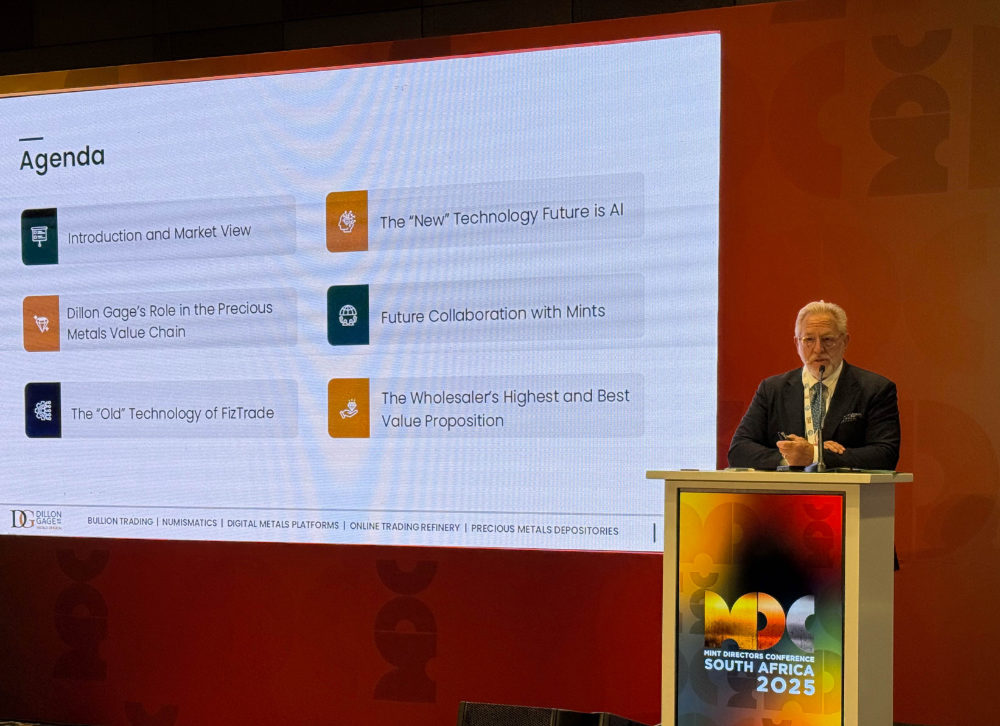
Terry Hanlon, President of Dillon Gage, explains how bullion coins are marketed in the United States
An alternative to commemorative coins are bullion coins, which almost every mint now produces. South Africa is the country where the bullion coin was invented. It was therefore inevitable that this would be a focus of the program, and the speakers would be top-notch. Naturally, the Krugerrand was the center of attention. The topics ranged from the Rand Refinery and the success of the Krugerrand to the contemporary marketing of bullion coins.
The most impressive presentation for me was held by Terry Hanlon of Dillon Gage. He illustrated how much technology, know-how, and money his company invests in supplying small local dealers not only with bullion coins, but also with the necessary knowledge to always offer the end customer the correct price (in addition, of course, to the profit margin they must calculate for their business).
Coins are antibacterial
We all remember the boost digital payments received during the coronavirus pandemic. Many companies used the nonsensical argument that cash transmits bacteria to convince customers to pay with an expensive – and cheaper (at least for them) – payment option. It has long been proven that coins are more hygienic than credit cards. Poongsan is continuing this research. The antibacterial properties of coins are linked to copper alloys. The question now is how they change when copper is combined with cheaper materials. After all, no country in the world can afford small coins made of real copper anymore.
Especially in Asian countries, where huge crowds often live together in close quarters, this is a hotly debated topic in order to be prepared for a future pandemic.
Cutting-edge conference technology: advantages and disadvantages
The conference was organized by Reconnaissance International, the most successful organizer of conferences on payment transactions and security printing. Reconnaissance hosts several conferences worldwide every month. Cutting-edge conference technology is therefore not a question for Reconnaissance, but a matter of course.
One problem that Reconnaissance solves with its technology is the participants’ reluctance to ask questions. In the past, a few people dominated the discussion. After all, not everyone is comfortable standing up in front of several hundred people and asking a question in a language that is usually not their native language. This can now be done via an app. The result: many questions, from which someone selects the ones to be put forward to the speaker.
The criteria used to select the questions remained unclear to the audience. Many complained that critical questions or even important corrections to the speakers’ statements had no chance of being raised.
The system undoubtedly enlivens the discussion, while simultaneously making it less controversial and therefore less useless. It’s precisely the clash of different opinions that makes the difference between a conference and reading an article. Thus, the speaker mutates into a preacher whose authority cannot be shaken by questions.
At the same time, the app is intended to facilitate better networking. It also does this for participants who regularly check their messages. That didn’t really work during the conference. After the conference? No chance! I, an old dinosaur, long for every wonderful illustrated program that allows me to look up the name and address of a conference participant I want to contact, even years later.






